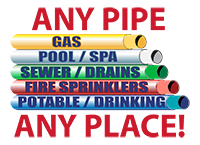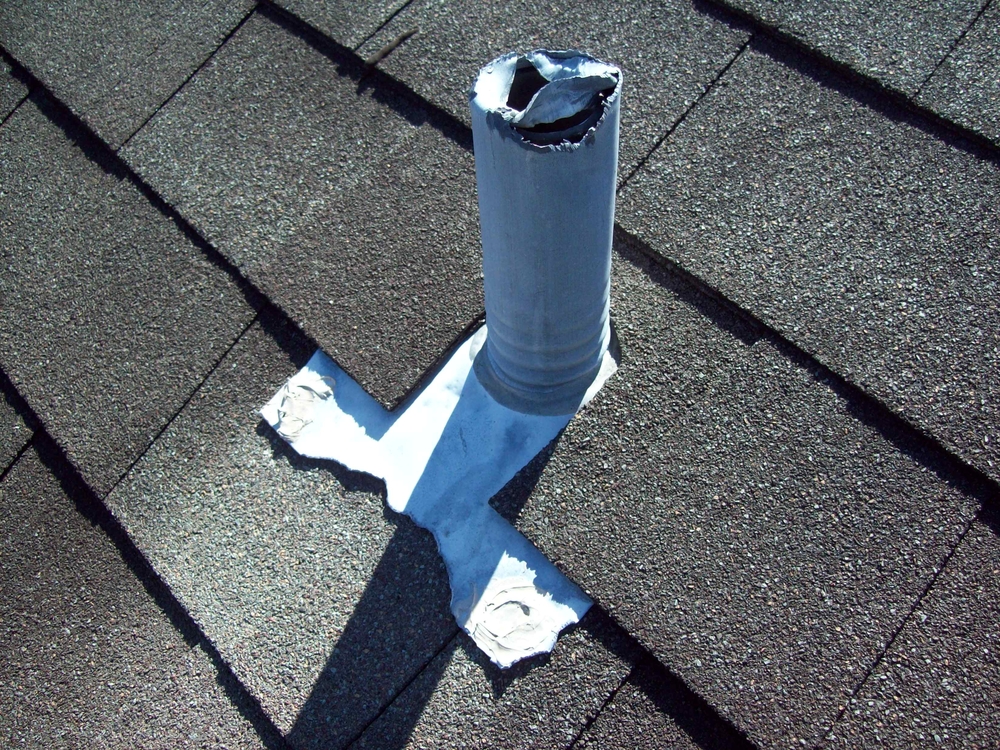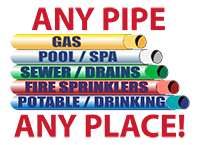Are you struggling with a slow-draining sink? Learn how to unclog plumbing vent to resolve the issue and restore proper drainage.
Plumbing vents play a crucial role in maintaining a healthy and functional plumbing system. Often overlooked, these vents are vital for the proper functioning of drains, preventing unpleasant odors, and allowing waste to flow smoothly through pipes.
In this simple guide, we will explore the significance of plumbing vents and how to recognize signs of a clogged vent. We will also provide an overview of the unclogging process to help you keep your plumbing system running smoothly.
Before we get started, let’s learn a little more about plumbing vents.
What is a Plumbing Vent?
A plumbing vent is a critical element of any plumbing system in a building. It consists of a network of pipes, including the roof vent pipe, that connect to the drainage system and extend to the exterior of the building, often through the roof.
The roof vent pipe is a vertical pipe that protrudes from the roofline, allowing air to flow freely in and out of the plumbing system. The height and location of the roof vent pipe also ensure that sewer gases are vented high above the building, reducing the risk of re-entering living spaces.
Besides the roof vent pipe, the plumbing vent system may include other vent pipes that connect to various fixtures and appliances. These include sinks, toilets, bathtubs, and washing machines. These vents work in conjunction with the main roof vent pipe to maintain proper air balance and facilitate the efficient drainage of wastewater.
A well-designed and properly functioning plumbing vent, including the roof vent pipe and plumbing vent roof components, is essential for the smooth operation of the plumbing system. It prevents clogs, eliminates sewer gas buildup, and ensures the longevity and reliability of the entire plumbing infrastructure.
Why are Plumbing Vents Important?
Plumbing vents are a fundamental component of any plumbing system. They serve two primary purposes:
- Equalizing pressure: As water flows through drains and pipes, it displaces the air present in the system. Without vents, this pressure imbalance would create the gurgling sounds commonly heard when water drains. Vents allow air to enter the system, ensuring the proper flow of water and preventing unwanted noises.
- Eliminating sewer gas: Sewer gas consists of harmful and foul-smelling gases like methane, hydrogen sulfide, and ammonia. If plumbing vents were absent, these gases would accumulate in the pipes and eventually find their way into your living spaces. Sewer gases not only cause unpleasant odors but also pose significant health hazards.
Signs of a Clogged Vent Pipe
Knowing how to unclog plumbing vent is crucial to prevent potential issues with your plumbing system. Some common signs of a clogged vent include:
- Slow drains: When a toilet vent pipe is clogged, the flow of air is restricted, causing water to drain slowly from sinks, showers, bathtubs, and toilets.
- Gurgling sounds: A clogged vent can lead to air pressure imbalances, resulting in gurgling or bubbling noises when water is draining.
- Foul odors: A clogged toilet vent can trap sewer gases in the plumbing system, leading to unpleasant smells emanating from drains.
- Water backups: A severe vent blockage can cause water to back up into sinks, toilets, or bathtubs.
How to Unclog Plumbing Vent: 9 Simple Steps
Knowing how to unclog plumbing vent can help you address vent issues promptly and maintain a well-functioning plumbing system in your home.
Let’s now learn more about how to unclog plumbing vent in 9 easy steps.
1. Safety First
Safety should always be the top priority when attempting any plumbing work, including unclogging a plumbing vent. Plumbing systems involve water, potentially hazardous materials, and working at heights in the case of roof vents.
Before starting, it’s essential to wear appropriate protective gear, such as gloves and safety goggles. Gloves protect your hands from debris and potential exposure to harmful substances. Safety goggles shield your eyes from splashes and accidental contact with water or cleaning solutions.
If the plumbing vent is located on the roof, exercise caution when accessing it. Climbing on the roof can be dangerous, especially in adverse weather conditions or if the surface is slippery. In such cases, always check if it’s possible to unclog plumbing vent without getting on roof.
If you must get on the roof always use a sturdy and stable ladder. You should also have someone else present as a spotter to assist if needed.
2. Locate the Vent
Locating the plumbing vent is the crucial first step before attempting to unclog it. Plumbing vents are essential components of a plumbing system, and they are typically placed strategically to ensure efficient air balance and proper drainage.
Confirming the location of the clogged vent helps you focus your efforts on the right area and avoid unnecessary work on other parts of the plumbing system.
In many residential buildings, plumbing vents are found on exterior walls. These vents usually extend vertically and may have a pipe cover or cap to protect them from debris and weather elements. Identifying the exterior vent helps you access the clogged vent point more easily.
In some cases, plumbing vents are located on the roof. The roof vent pipe extends vertically through the roof line and allows air to enter and exit the plumbing system.
Once you’ve located the vent, it becomes easier to plan the unclogging process. It helps you determine whether you can address the issue from the ground level or if you need to climb to the roof. Assessing the access point enables you to gather the necessary tools and equipment for the job.
3. Visual Inspection
By visually examining the vent, you can identify any visible signs of blockages or debris that may be causing the vent to clog.
During the visual inspection, look for any visible obstructions, debris, or foreign objects that might be lodged in the vent pipe. Common blockages may include leaves, twigs, bird nests, small animals, or accumulated dirt and grime.
If you can see the blockage, and it appears reachable and not too deep within the vent, you may attempt to remove it manually. Use gloves and suitable tools to carefully dislodge and remove the debris from the vent.
The visual inspection allows you to gauge the severity of the clog. Minor blockages may be easier to clear with simple methods. More significant obstructions may require specialized tools or professional assistance.
4. Use a Flashlight or Camera
Plumbing vents, particularly those on the roof, can be challenging to inspect directly. A flashlight or camera with a flexible probe allows you to extend your vision into the vent, even if you cannot physically reach the obstruction.
Sometimes, the clog may be located deeper inside the vent, making it difficult to see with the naked eye. By using a flashlight or camera, you can identify any hidden blockages or debris that might be causing the vent to clog.
A visual inspection using a flashlight or camera removes any guesswork in the unclogging process. You can precisely locate the obstruction, assess its size and nature, and plan the most effective strategy to remove it.
Using a camera to capture images or videos of the clog can be useful when seeking professional assistance. You can show the visual evidence to a plumber, helping them better understand the situation and prepare for the unclogging task.
5. Manual Removal
Manual removal involves physically reaching into the plumbing vent or using suitable tools to extract visible debris or obstructions. It is most effective when the clog is within sight or reachable from the vent opening. This method is suitable for removing leaves, twigs, paper, small objects, or other visible debris that may be obstructing the vent.
Before attempting manual removal, wear appropriate gloves to protect your hands from debris, dirt, and potential hazards. Safety goggles can also be beneficial, especially if there’s a risk of debris being dislodged during the process.
If the clog is slightly beyond your reach, consider using suitable tools, such as long tweezers, pliers, or a flexible grabber tool. These tools allow you to grasp and extract the debris safely.
When manually removing the obstruction, be gentle to avoid causing damage to the vent pipe or pushing the debris further down into the plumbing system. Slowly and carefully extract the debris to prevent it from getting stuck at another point in the vent.
6. Flushing with Water
Flushing with water is a relatively simple and non-invasive method that can be effective for minor clogs. The method uses the force of water to break up debris and allow it to flow out of the vent.
It is particularly useful for clearing lightweight debris, such as leaves, dirt, small objects, or accumulated grime that may be blocking the vent.
To perform the flush, attach a high-pressure hose nozzle to a garden hose. The high-pressure nozzle increases the force of the water, making it more effective in dislodging the clog.
If the vent is accessible from the ground level, position the hose nozzle at the vent opening. For roof vents, use a ladder to access the roof safely and aim the hose nozzle down the vent.
Start with moderate water pressure and gradually increase if necessary. Be cautious not to use excessive pressure, as it may cause damage to the vent or dislodge debris into more problematic areas.
7. Employ a Plumbing Snake
A plumbing snake, also called a Plumber’s Snake, is a flexible tool used to unclog drains and pipes by breaking up or removing obstructions. It is designed to reach deeper into the plumbing vent and break up or extract clogs that are not reachable through manual removal.
There are various types of plumbing snakes available, including handheld manual snakes and motorized snakes. Motorized snakes are more powerful and work well for tougher clogs.
To use a plumbing snake, insert the snake cable into the vent opening and feed it slowly into the vent. Keep a firm grip on the snake to maintain control and ensure it doesn’t get stuck.
Rotate the snake in a clockwise direction as you feed it into the vent. The rotation helps to break up the clog or grab onto it, allowing you to pull it out.
If the snake catches the clog, gently pull it back out of the vent. Be prepared for the debris or clog to come out with the snake. Flush the vent with water to clear any remaining debris and ensure the clog is fully removed.
8. High-Pressure Hose Nozzle
A high-pressure nozzle is an attachment for a garden hose designed to increase water pressure. It can be quite useful in clearing clogs in plumbing vents and your toilet vent pipe.
High-pressure nozzles are particularly useful for clearing more resistant clogs that might not respond to manual removal or flushing with regular water pressure. The force of the high-pressure water stream can break up and wash away tough clogs, such as accumulated dirt, grime, and even tree roots. The powerful water stream can penetrate deeper into the vent, addressing clogs that might be further down the plumbing system.
Compared to using manual tools, a high-pressure nozzle requires less physical effort, making it a convenient option for clearing clogs.
9. Professional Assistance
It is always best to seek help from a licensed plumber when dealing with persistent or challenging clogs in plumbing vents.
Licensed plumbers have extensive knowledge and experience in handling various plumbing issues, including vent clogs. They are trained to identify the underlying causes of the clog and apply the most effective solutions.
Plumbers also have access to specialized tools and equipment. These include high-powered plumbing snakes, video inspection cameras, and hydro-jetting machines. These tools can tackle stubborn clogs that may be difficult to clear using conventional methods.
Attempting DIY unclogging methods without proper knowledge can potentially lead to damage to the plumbing system or vent. Plumbers know how to handle the equipment correctly, minimizing the risk of accidents and costly repairs.
San Diego Plumbing and Pipelining: Your Plumbing and Pipelining Experts
We hope this step-by-step has helped you understand how to unclog plumbing vent. With proper maintenance and prompt action, you can ensure a smoothly functioning plumbing system and a healthy living environment.
Remember, San Diego Plumbing and Pipelining is your trusted ally in tackling challenging clogs. We specialize in providing comprehensive solutions to keep your plumbing system in top shape.







